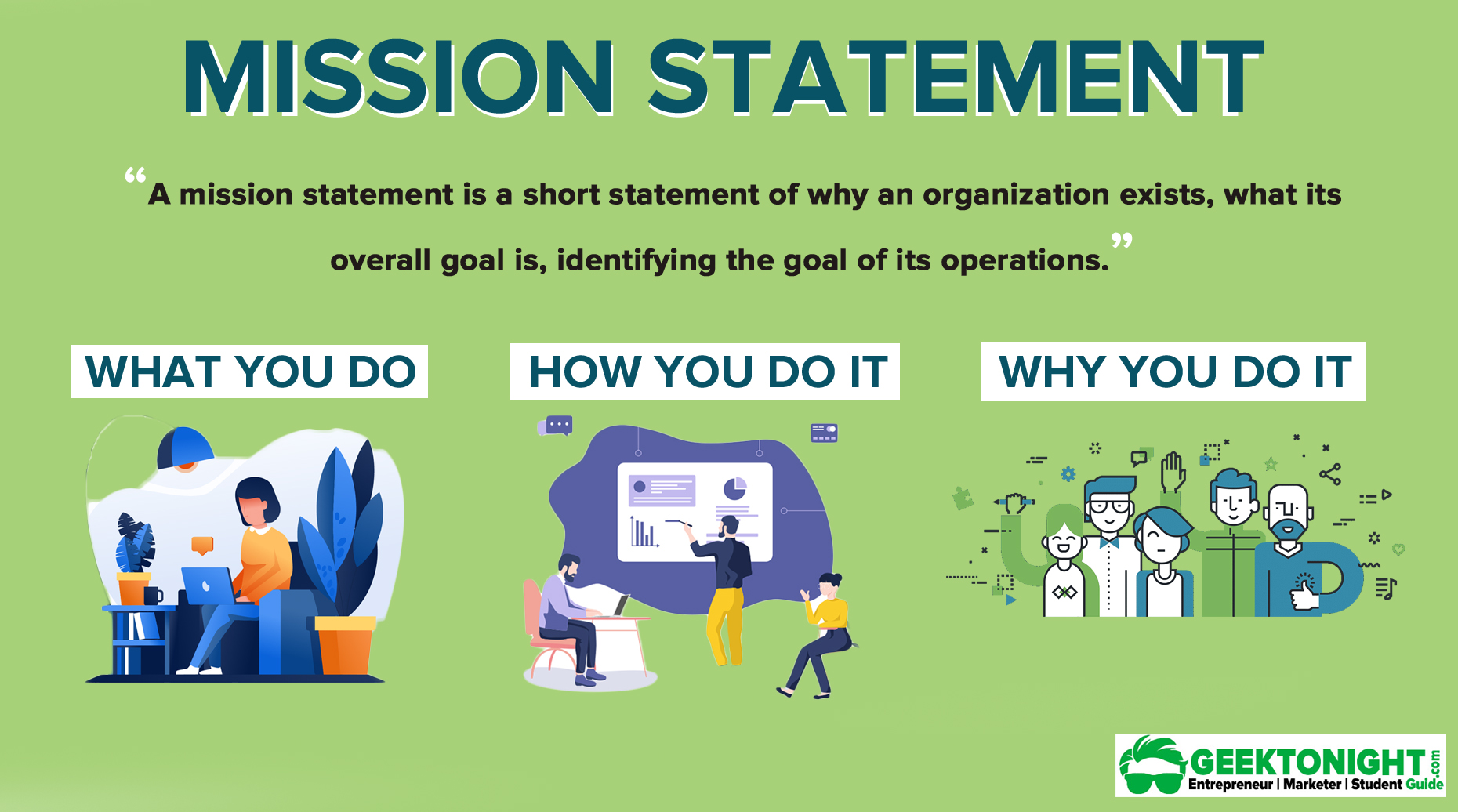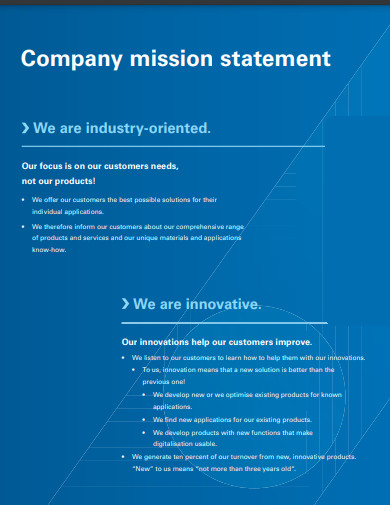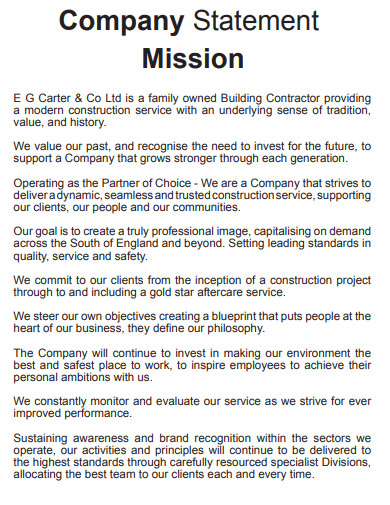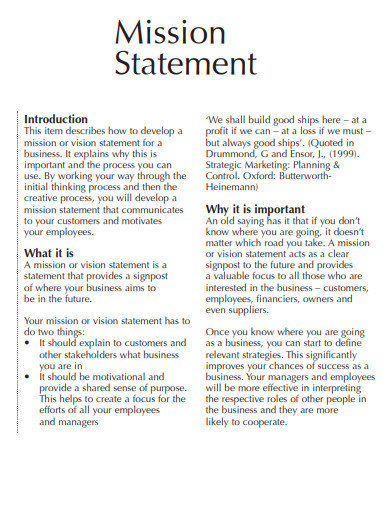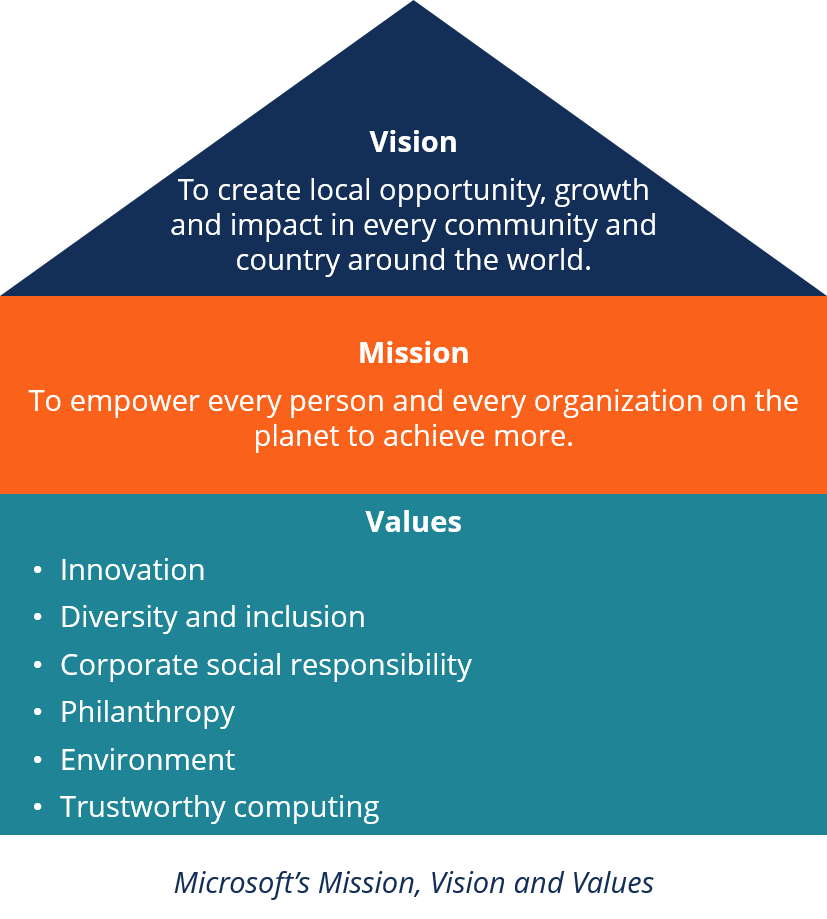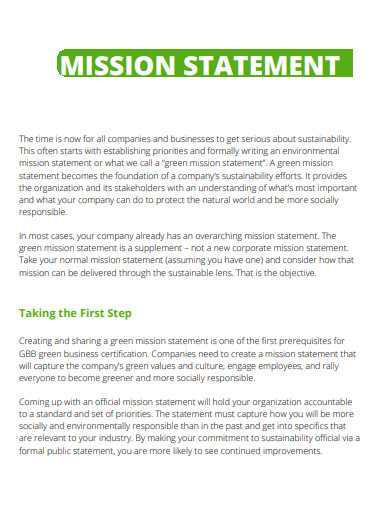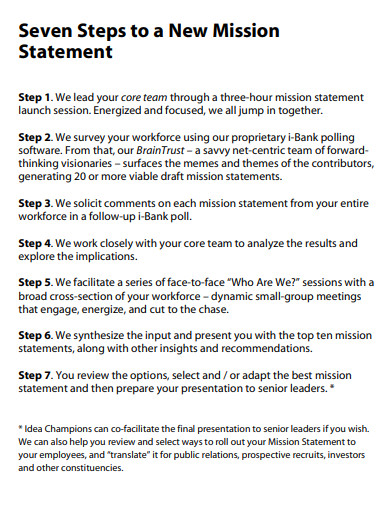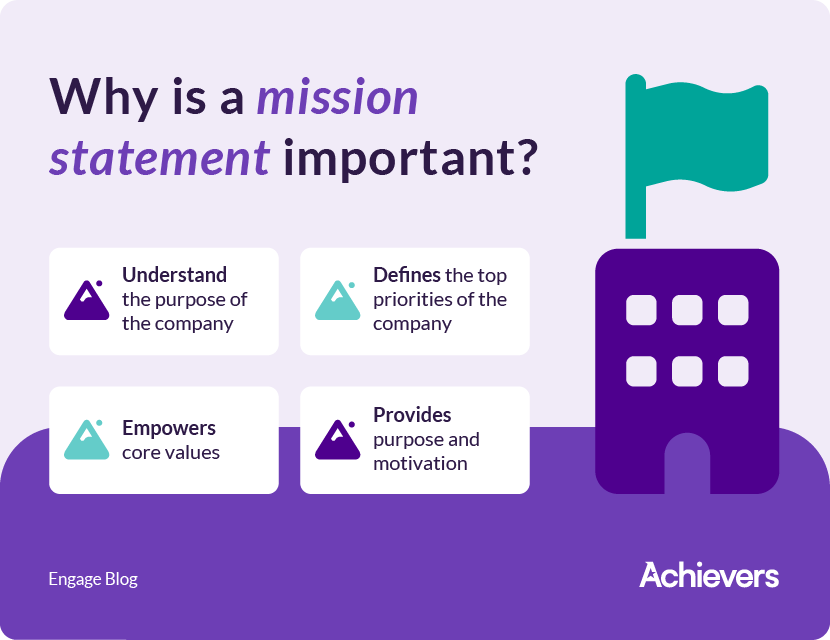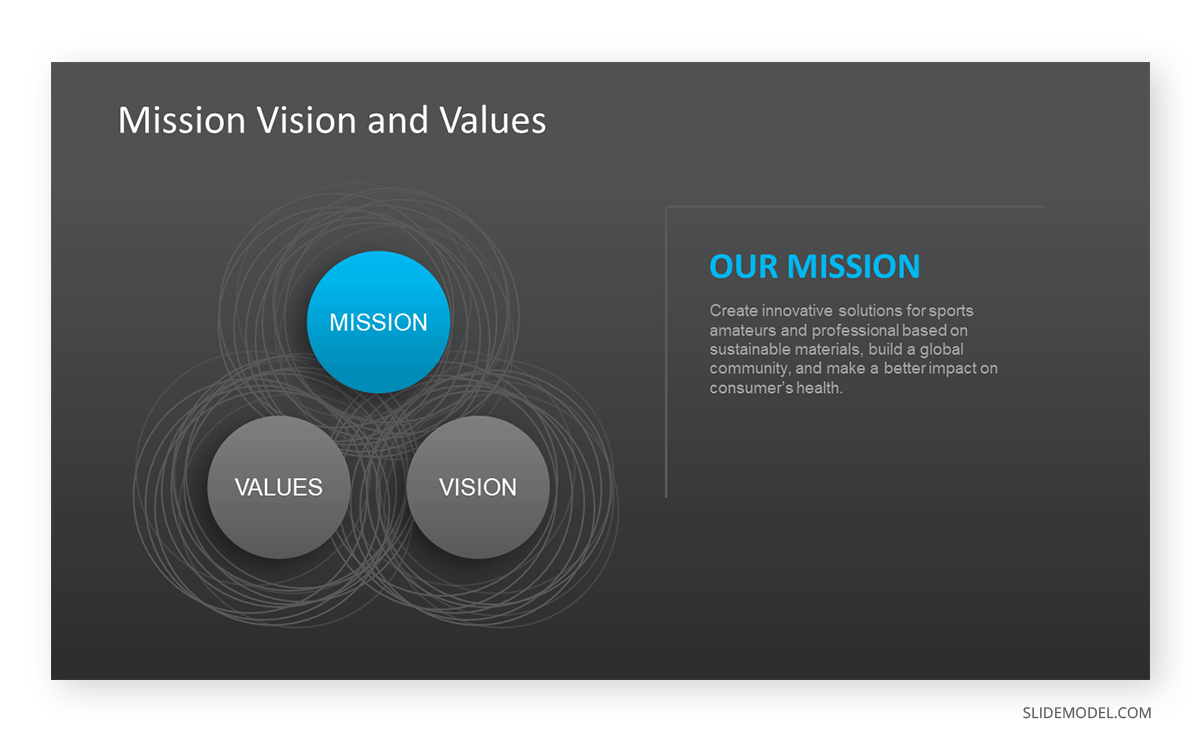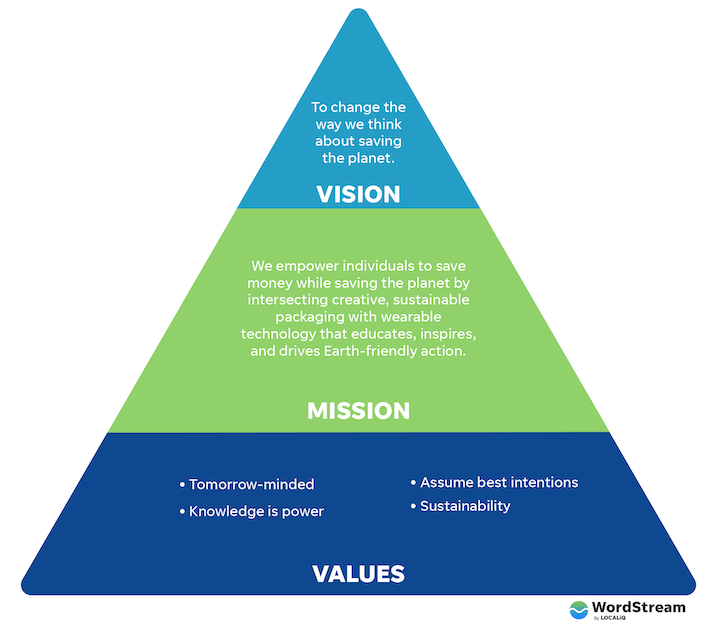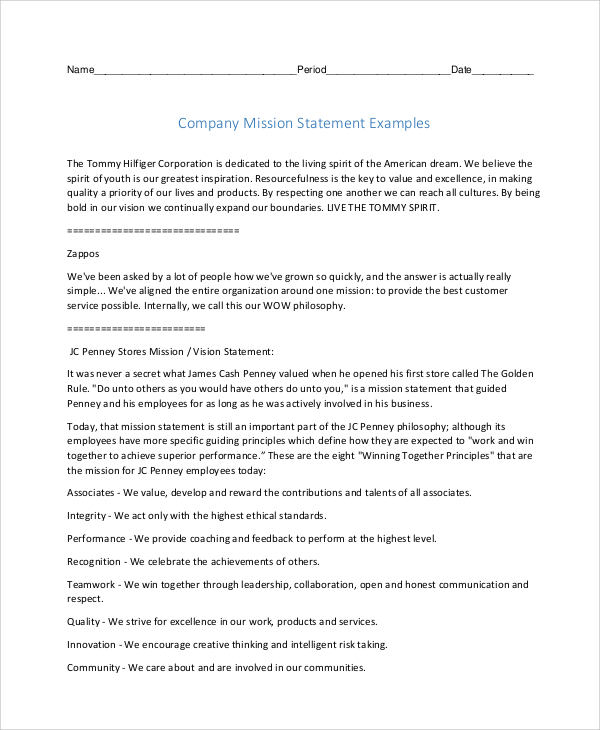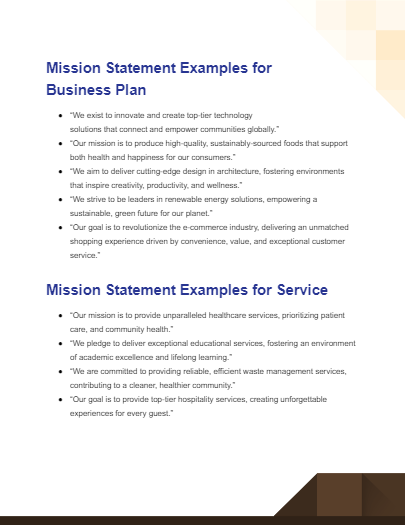Which Of These Represents The Company's Mission Statement

The aroma of freshly brewed coffee mingled with the quiet murmur of a Monday morning team meeting. Employees, faces illuminated by the soft glow of laptop screens, gathered in the brightly lit conference room. The topic? Not quarterly earnings, but something far more fundamental: revisiting the very essence of their company, captured in a single, powerful statement – their mission.
At the heart of this discussion is a crucial question facing many organizations today: which statement truly embodies our company's mission? The process of identifying and articulating a mission statement that resonates with employees and stakeholders alike is essential for guiding strategic decisions, fostering a shared sense of purpose, and ultimately, driving success.
The Quest for a Defining Statement
Every company, large or small, should possess a mission statement. It serves as a North Star, guiding decisions and shaping the corporate culture. But what happens when a company outgrows its initial mission, or when different interpretations arise regarding its meaning?
This is precisely the situation facing several organizations. Three competing statements emerged from recent internal discussions, each vying for the title of official company mission.
The Contenders: Three Potential Mission Statements
The first, Statement A, reads:
"To provide innovative solutions that empower our customers to achieve their goals."This statement focuses on innovation and customer empowerment. It emphasizes the company's commitment to helping clients succeed.
Statement B takes a slightly different approach:
"To deliver exceptional value through sustainable practices, contributing to a better future for all."This version highlights sustainability and a broader societal impact. It positions the company as a responsible corporate citizen.
Finally, Statement C offers a more internally focused perspective:
"To cultivate a collaborative and growth-oriented environment where employees can thrive and reach their full potential."This statement prioritizes employee well-being and professional development. It suggests a commitment to fostering a positive workplace.
The Importance of a Well-Defined Mission
A clear and compelling mission statement is far more than just words on a wall. It's a foundational element of a successful organization. According to a study by Harvard Business Review, companies with a clearly defined mission statement consistently outperform those without one.
A strong mission statement provides several benefits. It aligns employees around a common purpose, attracts and retains talent, and guides strategic decision-making. It also helps to communicate the company's values and priorities to external stakeholders, such as customers and investors.
Conversely, a vague or poorly defined mission statement can lead to confusion and disengagement. It can create a sense of disconnect between employees and the company's goals. This can ultimately hinder performance and innovation.
Analyzing the Options: Which Statement Resonates?
To determine the most appropriate mission statement, the company conducted a series of internal surveys and focus groups. Employees were asked to rate each statement based on several criteria, including clarity, relevance, and inspiration.
The results revealed a split in opinions. Statement A resonated strongly with the sales and marketing teams, who felt it accurately reflected their focus on customer solutions. Statement B appealed to employees in the sustainability and corporate social responsibility departments.
Meanwhile, Statement C garnered significant support from the human resources and employee development teams. Many felt it captured the company's commitment to creating a supportive and growth-oriented workplace. The challenge was finding a way to reconcile these different perspectives.
Synthesizing the Mission: A Collaborative Approach
Recognizing the value in each of the proposed statements, the leadership team decided to adopt a collaborative approach. Rather than choosing one statement over the others, they opted to synthesize them into a single, more comprehensive mission statement.
After several rounds of revisions and feedback, a new mission statement emerged:
"To empower our customers with innovative and sustainable solutions, while fostering a collaborative environment where employees can thrive and contribute to a better future."
This new statement incorporated elements from all three original proposals. It emphasized customer empowerment, sustainability, and employee well-being. It also reflected the company's commitment to innovation and collaboration.
The Result: A Unified Vision
The adoption of the new mission statement was met with widespread approval. Employees expressed a sense of ownership and alignment with the company's goals. The statement served as a powerful reminder of the company's values and priorities.
"I think this new statement really captures who we are as a company," said Sarah Chen, a senior project manager. "It's not just about making a profit; it's about making a difference in the world while also supporting our employees."
The revised mission statement has since been integrated into the company's training programs, performance evaluations, and marketing materials. It serves as a constant reminder of the company's purpose and values.
Beyond the Words: Living the Mission
Of course, a mission statement is only as effective as the actions that support it. It's not enough to simply write a catchy slogan; the company must actively live its mission every day. This requires a commitment to ethical business practices, sustainable operations, and employee empowerment.
The company has taken several steps to align its actions with its new mission statement. These include investing in renewable energy, implementing employee wellness programs, and promoting diversity and inclusion. The leadership team is committed to holding themselves and their employees accountable for living up to the company's values.
By embracing its mission statement as a guiding principle, the company is confident that it can achieve its goals while also making a positive impact on the world.
Conclusion: A Journey of Purpose
The journey to define a company's mission statement is an ongoing process of reflection and refinement. It requires open communication, collaboration, and a willingness to adapt to changing circumstances. As companies evolve, their mission statements must also evolve to remain relevant and inspiring.
Ultimately, a well-defined mission statement serves as a powerful tool for creating a sense of purpose and direction. It unites employees around a common goal, attracts and retains top talent, and guides strategic decision-making. In a world that's constantly changing, having a clear sense of purpose is more important than ever.
The successful articulation and implementation of the mission statement is not the end but the beginning. It marks the start of a renewed commitment to the values and vision that will guide the company towards a brighter future. It represents not just what the company does, but why it exists.

